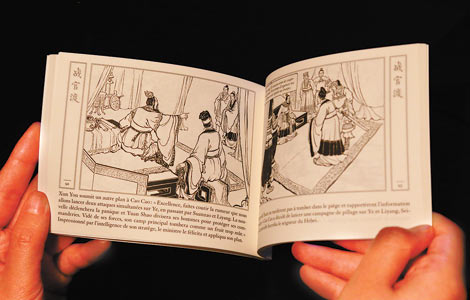
|
 |
|
A student gets advice about studying in the United States during the Beijing International Education Exhibition. More and more Chinese students have headed to the US for undergraduate and graduate study in recent years. A Jing / For China Daily |
Thanks to the rising family incomes, China continues to send more students to universities and colleges in the United States than any other nation.
During the 2012/13 academic year, Chinese student enrollments increased by a hefty 21.4 percent annually to more than 235,000, according to the 2013 Open Doors Report on International Educational Exchange, released on Monday.
According to the report from the Institute of International Education, the number of international students enrolled in US establishments of higher education in the academic year rose 7.2 percent to more than 819,000.
Of all international students in the US, 28.7 percent were from China. The rise in the number of undergraduate students from China was especially dramatic, increasing by 26 percent from the previous year.
Consultants said the number of Chinese students pursuing undergraduate education in the US had increased rapidly mainly because of the growing Chinese economy, as the cost of a four-year education in the US for a Chinese child is typically more than 1 million yuan ($163,000).
"As more families in China are becoming wealthy, an increasing number of Chinese parents can afford the high tuition and living expenses for their children to study for four years in the US," said Gao Yanding, founder of Yanding US-China Education, a consulting institute for Chinese students in the US.
Gao also said the advanced teaching and management methods, as well as the well-established knowledge systems in the US universities are attracting more and more Chinese students and their parents.
"The parents believe that in US universities, their children can get things domestic universities cannot offer," he said.
The ages of the students is another factor parents have to take into account when considering sending their children overseas, Gao said.
"Some Chinese parents don't want their children to study in the US too early, worrying that young kids cannot take good care of themselves, but when the children grow to 18 or 19 years old, it's time to let them go," he said.
A breakdown of the figures shows that 39.8 percent of Chinese students in the US were undergraduates, while 43.9 percent were graduates. The remainder included 10.2 percent in optional practical training, a US policy for international students on F-1 visas to work in the US for one year after graduation to get practical training to complement their field of study.
The report shows that students from the top three countries of origin — China, India and South Korea — now account for 49 percent of the total number of international students in the US.
But China was the only one of the three showing a rise in numbers, as enrollments from India and South Korea declined.
The number of Chinese students in the US started to grow in the 1980s. In the 1988/89 school year, the mainland beat Taiwan as the leading supplier and held that position until it was replaced by Japan in 1994/95. In 1998/99, China again became the leading source of foreign students for three years until it was replaced by India.
But in 2009/10, China topped the list again and has held first place ever since.
Life experience
Chinese students in the US said that one of the biggest attractions of getting an education there is the opportunity to experience something different in life.
"The most attractive thing within the US education system is that it gives students a lot of freedom and many opportunities," said Sun Siyi, a senior student at Penn State University majoring in energy business finance as well as broadcast journalism.
Sun said that choosing a double major in journalism after her sophomore year was a hard decision, because she only has two years left, and she hadn't taken any courses in journalism before.
"But the US universities allow students to arrange their own study schedule. Students have lots of opportunities to do a double or triple major, take a gap year, extend their graduation time or choose to be part-time students while working," she said.
Sun said the tuition fees at her university are about $32,000 and the living expenses are about $20,000 each year. She said her parents are able to handle the costs of her education in the US.
"They are very supportive of my studies in the US," Sun said. "They only hope that I can gain more personal growth and broaden my horizons by learning from other cultures here."
Contact the writers at chenweihua@chinadailyusa.com and zhaoxinying@chinadaily.com.cn








